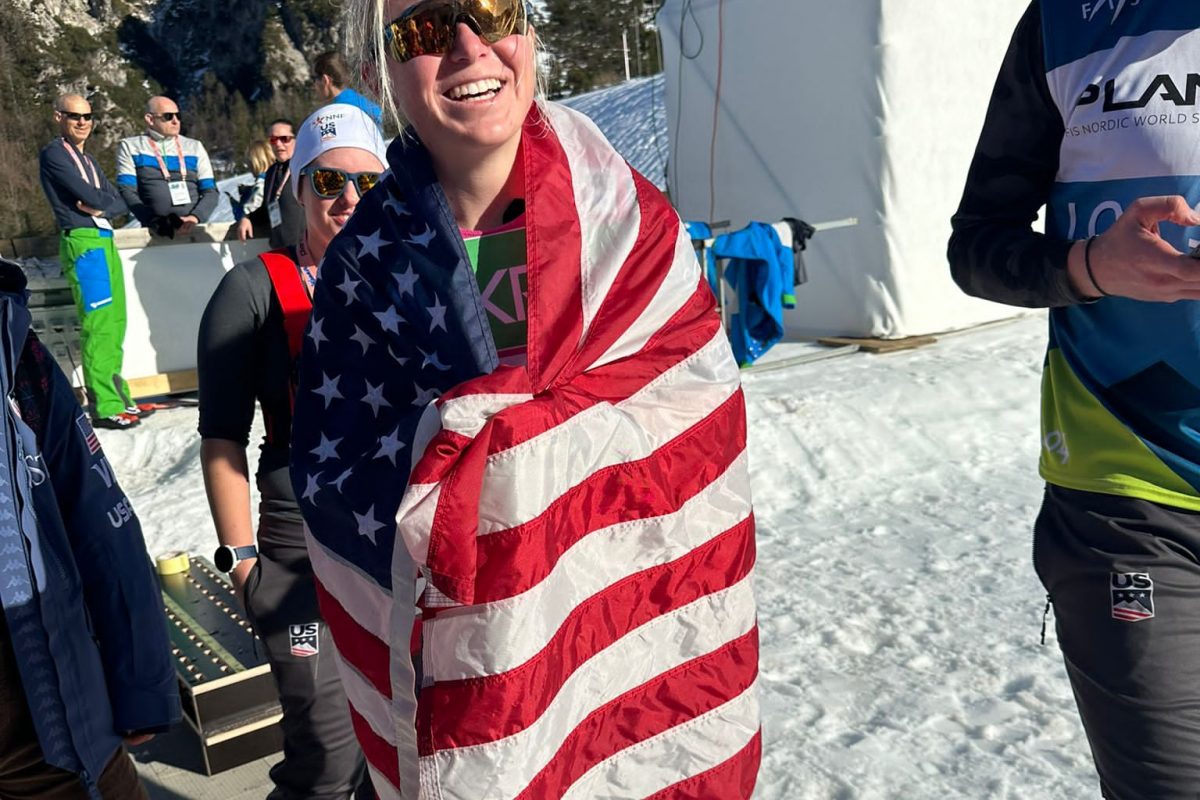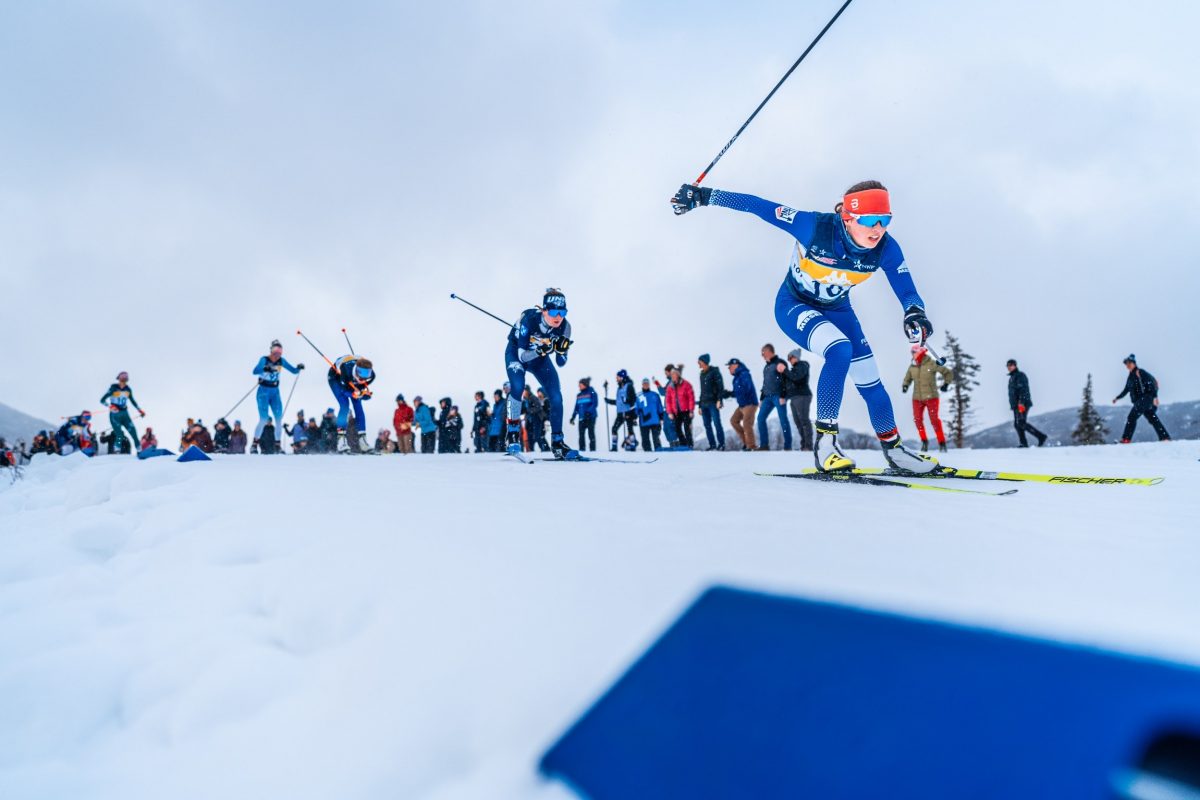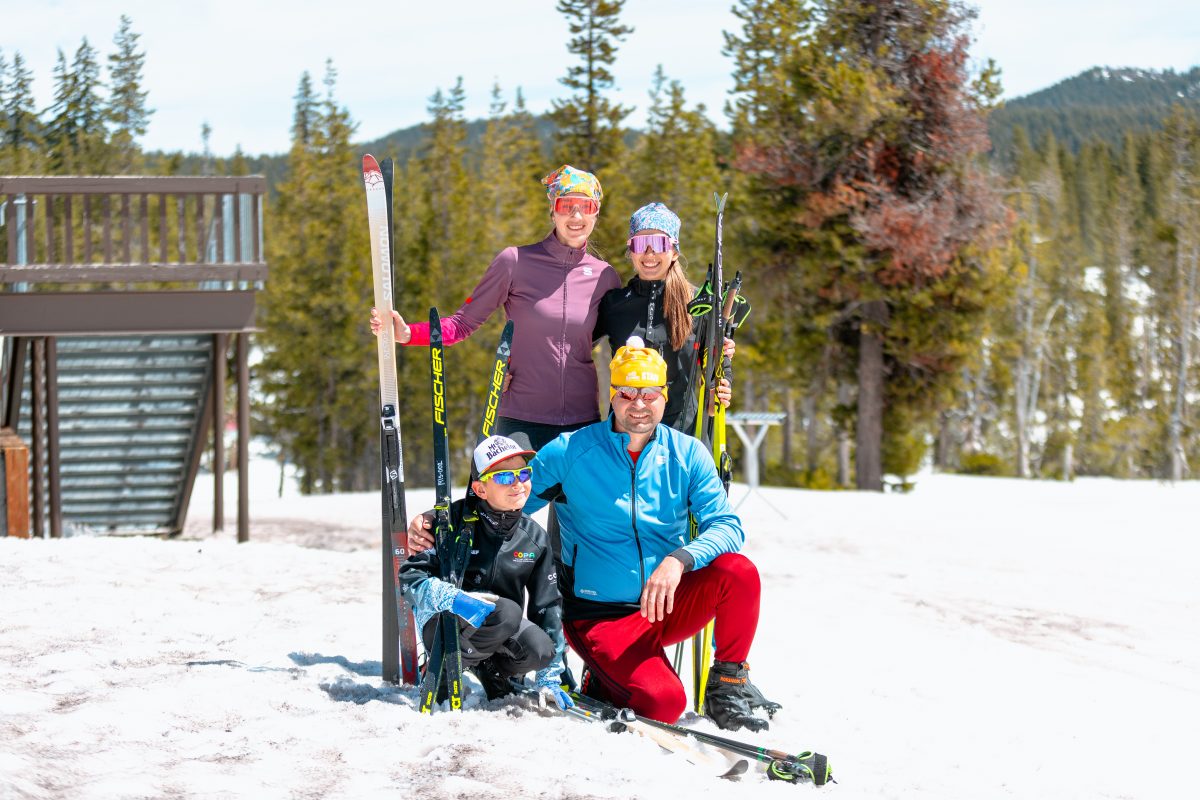
By the time Casey Smith, Tara Geraghty-Moats, and Sean Doherty reached U.S. Biathlon National Championships in March, they thought their seasons were coming to an end.
All three were finishing an intensive race tour which had begun at World Junior Championships in Finland, continued a few days later at cross country Junior Nationals in Soldier Hollow, and then swung north to West Yellowstone for more biathlon. Doherty had also competed overseas at the Youth Olympic Games in Innsbruck, Austria, and Smith at the Open European Championships in Brezno, Slovakia.
As they completed their victory laps in Montana – the two boys swept their respective age groups, while Geraghty-Moats won one title – they learned that they weren’t done yet.
“[Coach] Algis Shalna said, ‘Oh, you’re going to Swedish nationals,’” Geraghty-Moats said in an interview. “So we thought, okay. We knew we were staying with host families and that we were competing at Swedish nationals, but we didn’t get too many details ahead of time. We were definitely a little raced out and beginning to get in ‘racing almost over’ mode, but I was super excited.”
The three athletes were soon on a plane headed for Scandinavia as part of an exchange organized by U.S. Head Coach Per Nilsson, who lives in Sollefteå, Sweden, and had previously coached at the National Sports Academy “skidgymnasium” there. Swedish athletes will visit the U.S. this summer for a camp in Jericho, Vermont.
It turned out that as full-blown exchange students, the three Americans didn’t focus on racing as much as on the cultural lessons from the trip.
“I think the most important thing this time is the exchange, and for the athletes to get a perspective how it works in another country,” Nilsson told FasterSkier.
Life at the Skidgymnasium

For the first week in Sollefteå, the Doherty, Smith, and Geraghty-Moats simply followed the schedule of all the other biathletes at the skidgymnasium. The reported for school at 8 a.m., either for class or a morning workout, and proceeded from there.
Aspects of the trip could have been difficult; for instance, none of the Americans spoke any Swedish before arriving at the skidgymnasium. Geraghty-Moats admitted that she was apprehensive. Luckily, the Swedes were welcoming, helpful, and, importantly, spoke English well.
“It turned out to be really fun and easygoing,” Geraghty-Moats said. “They just sort of took us under their arms and let us hang, so that was cool.”
In terms of biathlon, the match with the Swedes was very apt – the Swedish junior national team certainly has talent, and their youth men’s and youth women’s relay teams both won silver at this year’s World Youth and Junior Championships. But they are also at a surprisingly similar level to the Americans in some regards. The Swedes had only two individual top-tens in twelve races at the Championships; the Americans had zero, but Doherty twice placed 13th and Geraghty-Moats finished 18th in the sprint.
Training, then, was not intimidating.
“Nordic ski training is really pretty much the same wherever you go, except that you have your own sort of local flavor to it,” Geraghty-Moats said.
She had the chance not only to train with top junior biathletes, but also to do intervals with Sofia Henrikkson, a skier who was part of Sweden’s silver-medal team at this year’s World Junior Championships in Turkey and placed fourth and seventh in the distance races there.
“It was definitely like, oh, these girls are human, they have their fast days and their slow days just like everyone else,” Geraghty-Moats said. “It was eye-opening to see that.”
The Americans continued to hold their own when it came time to race at nationals; Doherty swept the sprint and pursuit in his age division, while Geraghty-Moats placed fifth in the sprint and fourth in the pursuit. Smith moved up from eighth after the sprint to place sixth in the pursuit.
Perhaps the biggest surprise came not at the U.S. success in their age divisions – they had proved that potential at World Youth and Junior Championships – but when Doherty and Smith teamed up for the first two legs of the senior relay and Smith tagged off to a Swedish teammate in second place.
“Sean made a big impression on everybody here,” Nilsson told FasterSkier at the time. “And Tara was one of the strongest ones on the course all day.”
Developing Differently

With gracious, enthusiastic hosts – “they were just really excited to show us the town and their school and let us integrate with their whole system,” Geraghty-Moats said – the Americans were able to dig in and observe how differently Scandinavians approach biathlon.
“It’s a bit of a difference for sure, and if you ask the athletes they probably have both pros and cons about the setup if you compare U.S. and the Swedish system for this age group,” Nilsson said.
The differences start, of course, in culture. Not only are there simply more biathletes in Sweden, but there is a history to how they develop.
“The gymnasium here in Sollefteå has a long tradition and started 1978,” Nilsson told FasterSkier. “It has developed a lot of good cross country skiers and biathletes during the years. For example, this year at the World Championships in Ruhpolding, you had six athletes representing Sweden who had studied at this school.”
That’s quite different from the U.S. team, which has only one residential program for junior biathletes (at the Maine Winter Sports Center) and no program that tightly coordinates training and education. Ski academies, mainly in New England, offer an American take on the concept of the ski gymnasium, but none of them offer biathlon – and they have price tags.
“Being a biathlete was more integrated into school,” Geraghty-Moats said of Sweden. “You get grades on being a biathlete, that help you get into college. You don’t have to shell out huge bucks for the sports academy. It’s definitely more along the lines of doing football here, if you know what I’m saying. It’s more respected in the community, which is always helpful.”
Without the cultural support and central development hubs seen in Scandinavia, young Americans are left with a program that Geraghty-Moats described as “scattered.” The U.S. junior national team holds a few training camps throughout the year, but many of the country’s biathletes have scant company where they live.

“We’re definitely fighting geography,” she said.
They’re also fighting with their checkbooks. Geraghty-Moats said that the Swedes were surprised to hear that in the U.S., junior champions still had to pay their race entry fees and pay to be on club teams.
She thought, however, that U.S. athletes turn those challenges into strengths.
“I feel like American kids have to sacrifice more if they want to go into full-time racing,” she said. “So in a way American kids are a little bit more focused.”
That didn’t change the fact that she was jealous of a few things.
“The Swedish kids have a huge amount of opportunity and a huge depth of field right there, so it’s easier for them to get better faster. And if they want to go to competitions out of the country they just get on a bus. It’s not that hard.”
Looking Towards Jericho
The U.S. trio is looking forward to seeing their new friends in Vermont this summer.
“I think they’ll be intrigued by the [U.S. system],” Geraghty-Moats said. “I certainly hope they’ll enjoy training at our facilities, and I’ll enjoy getting to see them too.”
As for the Swedish leg of the exchange, Nilsson thought that the Americans enjoyed themselves, and also said that he appreciated the chance to work with them. As a senior national team coach who travels to the U.S. primarily for periodic training camps with his own athletes, it was nice for him to have a chance to get to know the juniors.
That wasn’t the most important thing, though. Nilsson again stressed the importance of the education that the Americans received in Sweden.
“We think this was good for the athletes for sure,” Nilsson said. “They have been introduced to the Swedish system with the ski gymnasium, and have participated both in the ‘normal’ school as well. One of the goals was to see and feel how it works with this system.”



